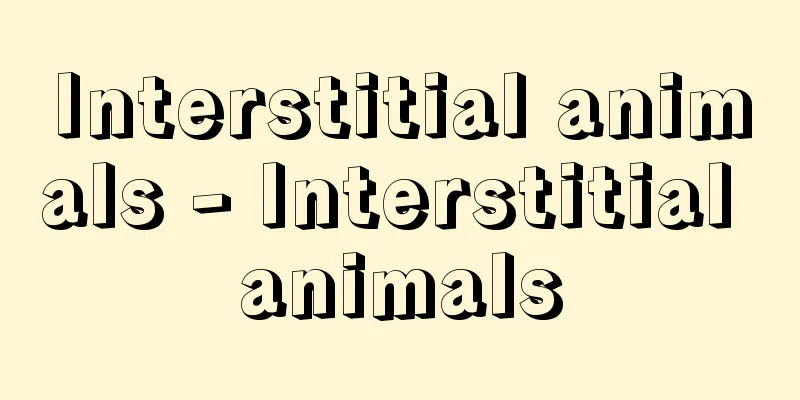Interstitial animals - Interstitial animals

|
…Sandy beaches are home to large in-fauna such as bivalves and crabs, but they are fewer in number than rocky reef areas. However, tiny crustaceans, polychaetes, nematodes and other interstitial fauna are significantly more numerous in the sand. Eelgrass beds, which are seaweeds with true roots, often form offshore from sandy beaches. *Some of the terminology explanations that mention "interstitial animals" are listed below. Source | Heibonsha World Encyclopedia 2nd Edition | Information |
|
…砂浜域には二枚貝やカニ類など大型の埋在性動物in‐faunaがすむが,岩礁域と比べて少ない。しかし微小な甲殻類,多毛類,線虫類などの間隙(かんげき)性動物interstitial faunaは砂中に著しく多い。砂浜の沖合には本当の根をもつ海草類の生育しているアマモ(アジモ)場ができることが多い。… ※「間隙性動物」について言及している用語解説の一部を掲載しています。 出典|株式会社平凡社世界大百科事典 第2版について | 情報 |
Recommend
Kaimai (returning rice) - Kaimai
In the Edo period, this term referred to the trans...
Meri (English spelling) Veijo Väinö Valvo Meri
Finnish novelist, poet and playwright. Born in Vi...
Unison - yunison (English spelling) unison English
A method of forming textures (sound composition p...
Air motor
…(4)Machines that extract power from steam or hig...
Tiahuanaco
…the culture centered in Tiahuanaco, located in t...
Briquettes - Rentan (English spelling)
A type of carbonaceous solid fuel. It is a solid ...
Horse-drawn bird - Horse-drawn bird
…An animal phylum within the invertebrates. It is...
Elben, KJ - Elben
…A Central European republic that existed from 19...
Benke Crab - Benke Crab
This crab belongs to the family Grapsidae, class ...
Dowel - Aikugi
… [Hiroyuki Suzuki] [Japan] Metal fittings in Jap...
Uneme Festival
...The Tale of Yamato records that Uneme, lamenti...
Japanese weasel (English spelling)
...A mammal of the Mustelidae family in the carni...
Athens
(Athēnai) The capital of the Greek Republic. Locat...
Pagnol - Marcel Pagnol
French playwright. Born in a farming family in Au...
Town steward - Give me
A professional employed by the towns of early mod...









